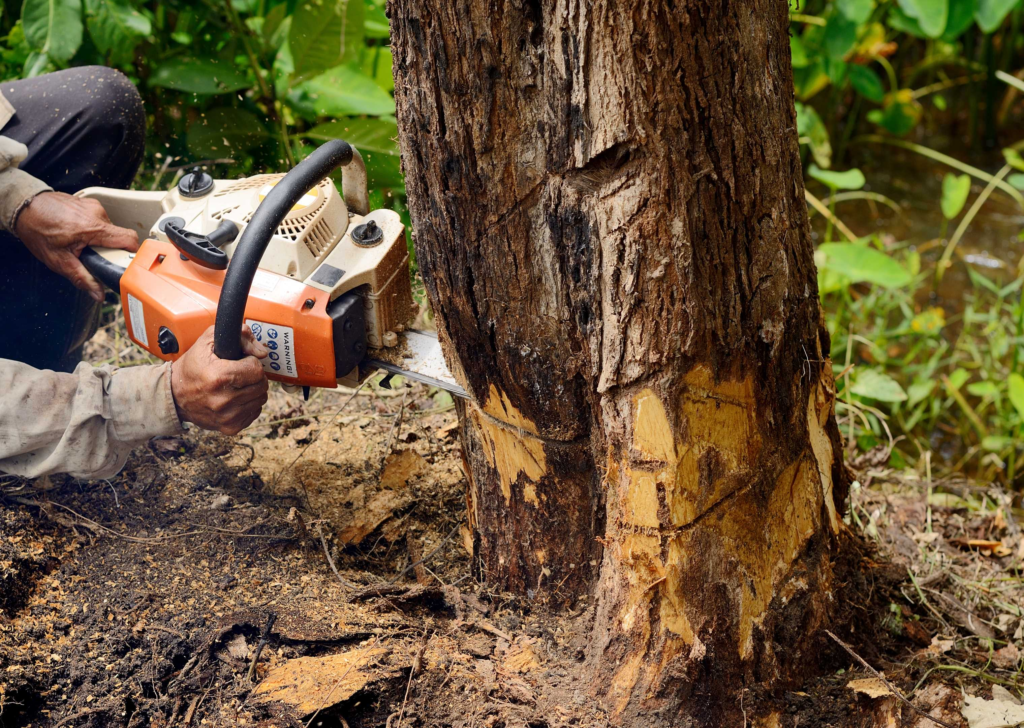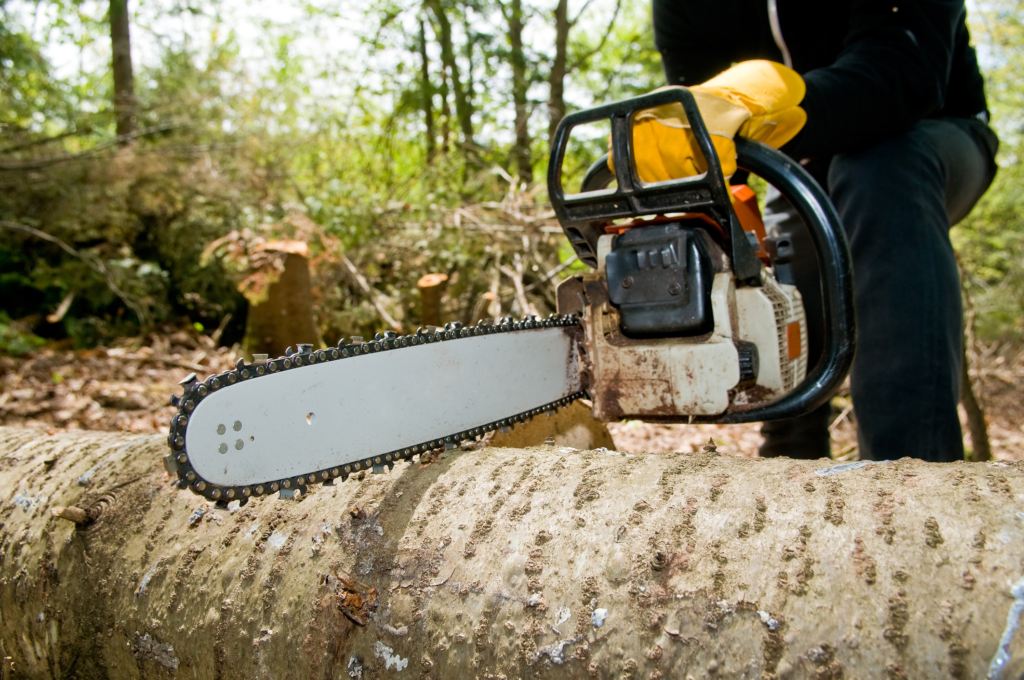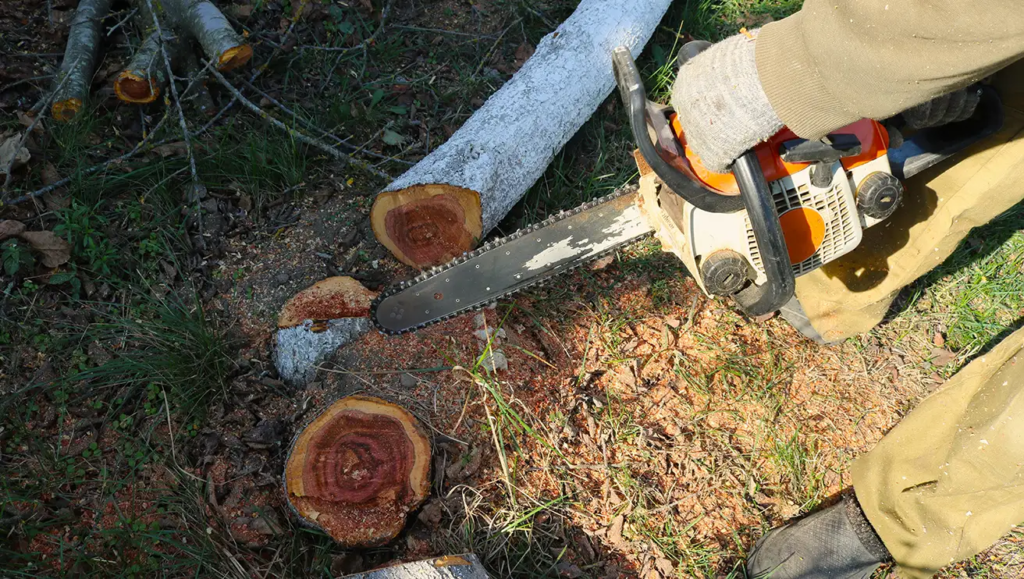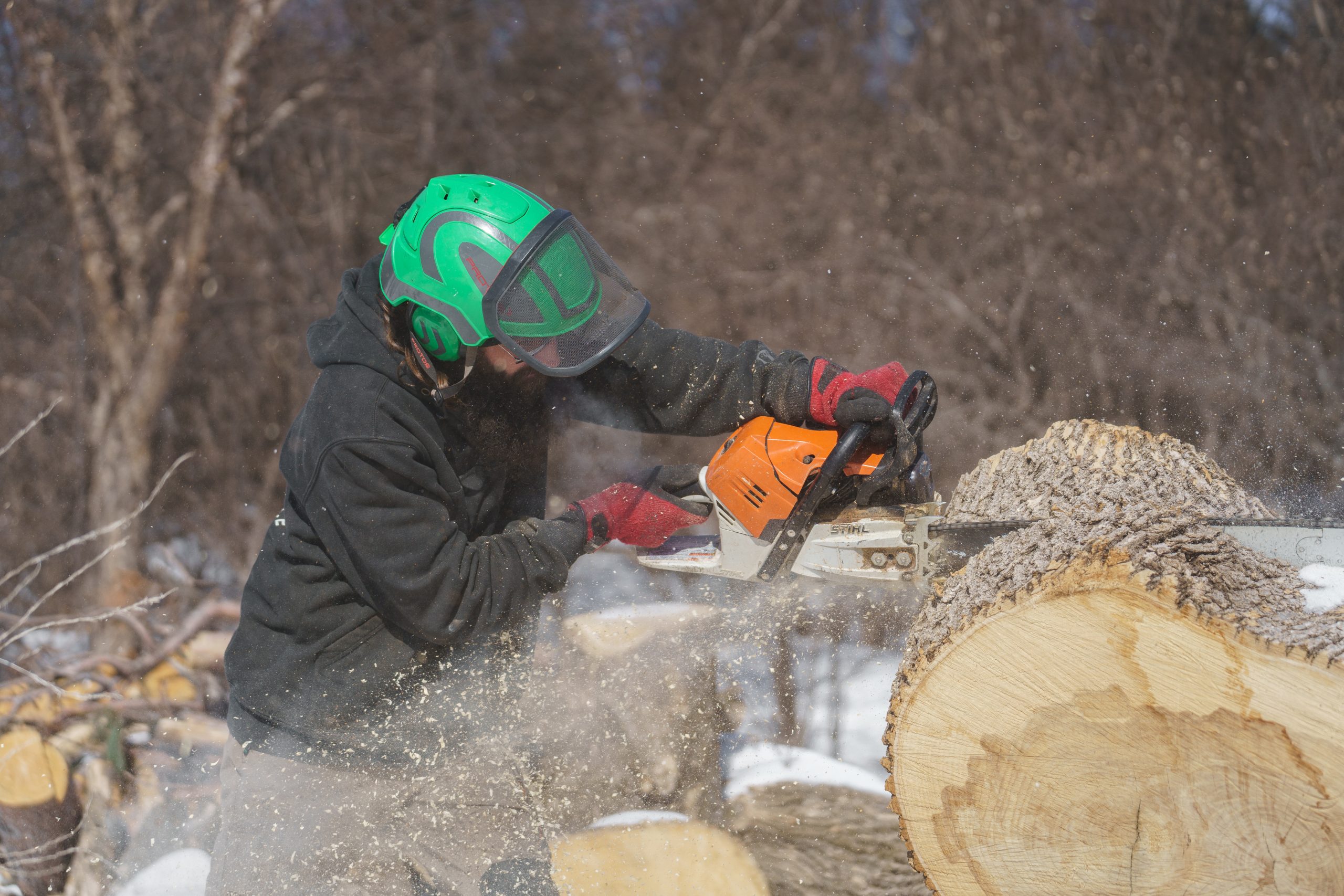OSHA Tree Removal Regulations: A Complete Guide
Tree removal is a hazardous profession that requires proper knowledge, equipment, and adherence to safety regulations. Whether you’re a professional arborist, a tree care company owner, or a contractor involved in tree removal operations, understanding and complying with OSHA regulations is crucial for maintaining workplace safety and avoiding costly penalties. This comprehensive guide will walk you through everything you need to know about OSHA tree removal regulations in the United States.
Understanding OSHA’s Role in Tree Removal Safety
The Occupational Safety and Health Administration (OSHA) is the federal agency responsible for ensuring safe and healthful working conditions for workers by setting and enforcing standards and providing training, outreach, education, and assistance. When it comes to tree removal operations, OSHA has established specific regulations and guidelines to protect workers from the numerous hazards associated with this high-risk industry.
Tree care and removal operations present significant dangers, including falls from heights, strikes from falling branches, electrocution from contact with power lines, and injuries from chainsaws and other equipment. According to OSHA statistics, the tree care industry experiences a fatality rate that is roughly 15 times higher than the average across all industries in the United States. This stark reality underscores the importance of strict adherence to safety regulations.
While OSHA doesn’t have a specific standard dedicated exclusively to tree care operations, tree removal activities are covered under several existing standards, particularly those related to general industry (29 CFR 1910) and construction (29 CFR 1926). Additionally, OSHA has developed specific guidance documents and enforcement policies that apply directly to arboricultural operations.
Key OSHA Standards Applicable to Tree Removal
When performing tree removal work, you must comply with multiple OSHA standards that address various aspects of the operation. While not exhaustive, the following are among the most frequently cited OSHA standards in tree removal operations:
- Personal Protective Equipment (PPE) – 29 CFR 1910.132
- Eye and Face Protection – 29 CFR 1910.133
- Respiratory Protection – 29 CFR 1910.134
- Head Protection – 29 CFR 1910.135
- Foot Protection – 29 CFR 1910.136
- Fall Protection – 29 CFR 1910.140, 1926.500-503
- Electrical Safety (Working Near Power Lines) – 29 CFR 1910.269, 1910.333
- Hand and Portable Powered Tools – 29 CFR 1910.241-244
- Machine Guarding – 29 CFR 1910.212-219
- Logging Operations – 29 CFR 1910.266
It’s worth noting that OSHA has been working on developing a specific Tree Care Operations standard, which would consolidate and clarify requirements for the industry. Until such a standard is finalized, you must comply with the patchwork of existing standards that apply to the hazards encountered during tree removal work.
Essential PPE Requirements for Tree Removal Operations
Personal Protective Equipment (PPE) is your first line of defense against the hazards of tree removal. OSHA regulations require employers to assess workplace hazards and provide appropriate PPE to protect workers. As a tree care professional or employer, you must ensure that all workers have and properly use the following essential PPE during tree removal operations:

Head Protection
Hard hats that comply with ANSI Z89.1 standards are mandatory for tree removal operations. These hard hats must protect against both impact and penetration to the top and sides of the head. For arboricultural operations, Type I or Type II hard hats with Class E electrical ratings are typically required, especially when working near electrical hazards. You should inspect hard hats regularly for cracks, dents, or other damage, and replace them according to the manufacturer’s recommendations or after any significant impact.
Eye and Face Protection
Tree removal involves numerous eye hazards, including flying debris, wood chips, sawdust, and branches. OSHA requires appropriate eye protection that meets ANSI Z87.1 standards. Depending on the specific task, you may need safety glasses with side shields, goggles, or full-face shields. When operating chainsaws, a mesh face shield or safety goggles should be worn to protect against flying particles.
Hearing Protection
Chainsaws and wood chippers generate noise levels that frequently exceed OSHA’s permissible exposure limits. When noise levels exceed 85 decibels (averaged over an 8-hour workday), hearing protection is required. Options include earplugs, earmuffs, or a combination of both. You should select hearing protection with an appropriate Noise Reduction Rating (NRR) based on the noise levels of your equipment.
Hand Protection
Cut-resistant gloves are essential for chain saw operations and handling rough or splintered wood. The gloves should provide adequate protection while maintaining sufficient dexterity for safe tool operation. For operations involving chemicals such as herbicides or pesticides, chemical-resistant gloves may be required.
Leg Protection
When operating chain saws, OSHA requires the use of leg protection such as chaps, leggings, or pants that contain cut-resistant material designed to stop a chain saw at operating speed. These items should meet the ASTM F1897 standard and should cover the full length of the thigh to the top of the boot.
Foot Protection
Safety boots or shoes with steel toes, meeting ASTM F2413 standards, are required for protection against falling or rolling objects. For chain saw operators, cut-resistant boots that provide protection from accidental contact with running saw chains are necessary. These boots should also have good traction to prevent slips and falls.
Fall Protection
For tree removal operations involving climbing or working at heights, OSHA requires appropriate fall protection. This typically includes a climbing harness or saddle designed specifically for tree care work, along with appropriate ropes, lanyards, and connection hardware. All fall protection equipment must be inspected before each use and must comply with the relevant OSHA standards.
Tree Removal Near Power Lines: Critical Safety Regulations
One of the most dangerous aspects of tree removal is working near overhead power lines. Electrocution is a leading cause of death in the tree care industry, making this aspect of OSHA regulations particularly important. The regulations differentiate between qualified line-clearance tree trimmers and other workers, with different requirements for each group.
Minimum Approach Distances
If you’re not a qualified line-clearance tree trimmer, OSHA regulations specify minimum approach distances that you must maintain from energized power lines. These distances vary based on the voltage of the lines:
| Voltage (kV) | Minimum Approach Distance (feet) |
|---|---|
| 0 to 50 | 10 feet |
| 50 to 200 | 15 feet |
| 200 to 350 | 20 feet |
| 350 to 500 | 25 feet |
| 500 to 750 | 35 feet |
| 750 to 1000 | 45 feet |
It’s crucial to remember that these distances apply not only to workers but also to any tools, equipment, or tree parts that could come into contact with the lines. When planning tree removal operations near power lines, you must account for the full height of the tree, the direction of the fall, and any potential for branches to contact lines during the removal process.

Requirements for Qualified Line-Clearance Tree Trimmers
If you’re performing tree work as a qualified line-clearance tree trimmer, different regulations apply. Under 29 CFR 1910.269, qualified workers must receive specialized training and demonstrate proficiency in:
- The skills and techniques necessary to distinguish exposed live parts from other parts of electric equipment
- The skills and techniques necessary to determine the nominal voltage of exposed live parts
- Minimum approach distances and the corresponding voltages to which they may be exposed
- Proper use of specialized equipment, insulating devices, and personal protective equipment
Qualified line-clearance tree trimmers may work closer to energized lines than the minimum approach distances listed above, but must still maintain specific clearances based on voltage and must use appropriate insulating equipment and work practices.
Pre-Work Hazard Assessment
Before beginning any tree removal operation near power lines, OSHA requires a thorough hazard assessment. This assessment should:
- Identify all overhead and underground utility lines in the work area
- Determine the voltage of overhead lines (which may require contacting the utility company)
- Evaluate the tree’s height, condition, and lean
- Assess environmental conditions such as wind speed and direction
- Develop a written plan for safely removing the tree while maintaining required clearances
If tree removal cannot be performed while maintaining required clearances from power lines, you must contact the utility company to de-energize or shield the lines before proceeding with the work.
OSHA Requirements for Equipment and Machinery
Tree removal operations involve various types of equipment and machinery, each with specific OSHA requirements for safe operation and maintenance. Understanding these requirements is essential for compliance and worker safety.
Chain Saw Safety Requirements
Chain saws are among the most dangerous tools used in tree removal operations. OSHA regulations for chain saw use include:
- Chain saws must be equipped with a functioning chain brake
- A device to minimize kickback must be installed on the saw
- The saw must have a throttle control lockout to prevent accidental acceleration
- The saw must have a properly functioning on/off switch within thumb reach
- Front and rear hand guards must be in place
- The chain must be properly sharpened and tensioned according to manufacturer specifications
- The saw must be shut off or the chain brake engaged when carried more than 50 feet or through hazardous terrain
Additionally, OSHA requires specific safe operating procedures, including maintaining secure footing, holding the saw with both hands, keeping body parts away from the saw chain, and avoiding cutting with the tip of the saw to prevent kickback.
Aerial Lift and Bucket Truck Requirements
When using aerial lifts or bucket trucks for tree removal, OSHA standards under 29 CFR 1910.67 apply. Key requirements include:
- Only trained and authorized personnel may operate aerial lifts
- The lift must be inspected each day before use
- The manufacturer’s operation manual must be kept on the lift
- Workers in bucket trucks must wear appropriate fall protection, typically a body harness with a lanyard attached to the bucket or boom
- The maximum load capacity must not be exceeded
- Outriggers must be positioned on solid ground or pads
- Workers must stand firmly on the floor of the bucket and not climb on edges or use planks, ladders, or other devices for additional height
Chipper Safety Requirements
Wood chippers pose serious hazards during tree removal operations. OSHA requires the following safety measures:
- Chippers must be equipped with a locking device on the access panel to the blade
- An in-feed hopper of sufficient size to prevent employees from reaching the blades
- An emergency shutoff device within easy reach of workers feeding the chipper
- A feed control bar that can stop and reverse the feed mechanism
- Proper guarding of all moving parts
- Training for all workers on safe chipper operation
- Appropriate PPE, including eye, face, hearing, and head protection
OSHA also requires specific safe work practices, such as feeding branches butt-end first, standing to the side of the infeed chute, and immediately walking away after feeding material into the chipper.
Job Hazard Analysis and Training Requirements
OSHA places significant emphasis on hazard identification, assessment, and worker training. For tree removal operations, these requirements are particularly important due to the high-risk nature of the work.
Conducting a Job Hazard Analysis
Before beginning tree removal operations, OSHA requires employers to conduct a job hazard analysis (JHA) to identify potential hazards and establish control measures. A comprehensive JHA for tree removal should include:
- An assessment of the tree’s condition, including any structural weaknesses, dead branches, or disease
- Identification of site hazards, such as slopes, uneven terrain, or obstacles
- Evaluation of environmental conditions, including wind speed and direction
- Identification of nearby structures, roads, or utility lines
- Development of a detailed removal plan, including drop zones, retreat paths, and emergency procedures
The JHA should be documented in writing and communicated to all workers involved in the operation. As conditions change, the JHA should be updated accordingly.

Worker Training and Certification Requirements
OSHA requires that all workers involved in tree removal operations receive appropriate training for their assigned tasks. This training must cover:
- Recognition of hazards associated with tree removal
- Proper use and maintenance of tools and equipment
- Correct use of personal protective equipment
- Safe work practices and procedures
- Emergency response procedures, including first aid and rescue techniques
For specialized tasks such as tree climbing, aerial lift operation, or work near electrical hazards, additional training and in some cases certification may be required. OSHA does not specify particular certification programs, but industry-recognized certifications such as those from the International Society of Arboriculture (ISA) or the Tree Care Industry Association (TCIA) can help demonstrate compliance with training requirements.
It’s important to note that training must be provided in a language and vocabulary that workers can understand. For workers with limited English proficiency, training materials and instructions must be translated or interpreted appropriately.
Documentation Requirements
OSHA requires employers to maintain documentation of all training provided to workers. These records should include:
- The date of the training
- The content covered
- The name and qualifications of the trainer
- The names of all workers who received the training
- Results of any evaluations or tests
Training records should be kept readily accessible and should be updated as workers receive refresher training or training on new equipment or procedures.
OSHA Inspections and Compliance Strategies
OSHA enforces its regulations through workplace inspections, which can occur for various reasons, including:
- Imminent danger situations
- Severe injuries or fatalities
- Worker complaints
- Referrals from other agencies
- Targeted inspections of high-hazard industries (which includes tree care)
- Follow-up inspections
Given the high-risk nature of tree removal operations, OSHA inspections are relatively common in this industry. Understanding the inspection process and developing proactive compliance strategies can help you avoid violations and penalties.
What to Expect During an OSHA Inspection
An OSHA inspection typically includes four stages:
- Presentation of credentials: The OSHA compliance officer will present identification and explain the purpose and scope of the inspection.
- Opening conference: The officer will explain why the workplace was selected for inspection and outline the inspection process. You have the right to have a company representative present during the inspection.
- Walkaround: The compliance officer will tour the workplace, observing conditions, reviewing records, and interviewing workers. During tree removal operations, the officer will likely focus on:
- Proper use of PPE
- Condition and maintenance of equipment
- Safe work practices, especially for high-risk activities like climbing or chainsaw use
- Hazard communication and training
- Documentation of JHAs and training
- Closing conference: The officer will discuss findings, possible violations, and proposed abatement periods. They will also explain the citation and penalty process.
Common OSHA Citations in Tree Removal
The most frequently cited OSHA violations in tree removal operations include:
- Lack of proper fall protection for workers at heights
- Failure to maintain minimum approach distances from power lines
- Inadequate personal protective equipment
- Improper chainsaw operation or maintenance
- Insufficient training or hazard communication
- Lack of proper machine guarding on equipment
- Failure to conduct and document job hazard analyses
Understanding these common citations can help you focus your compliance efforts on the areas most likely to be scrutinized during an inspection.
Developing a Proactive Compliance Program
To maintain OSHA compliance and avoid costly penalties, consider implementing the following strategies:
- Develop comprehensive written safety programs specific to tree removal operations, including procedures for hazard assessment, equipment inspection, and emergency response.
- Implement a regular training schedule to ensure all workers receive initial and refresher training on hazards, equipment, and safe work practices.
- Conduct regular safety audits of your operations, using OSHA standards as a benchmark to identify and correct potential violations before they result in citations.
- Maintain detailed documentation of all training, equipment inspections, hazard assessments, and corrective actions.
- Consider participating in OSHA’s Voluntary Protection Programs (VPP) or consulting services, which can provide guidance on compliance without the risk of citations.
- Stay informed about OSHA developments, including new or revised standards that may affect tree removal operations. The OSHA website (www.osha.gov) is a valuable resource for updates and compliance assistance.
Advanced Safety Considerations and Best Practices
While OSHA regulations establish minimum requirements for workplace safety, implementing additional best practices can further reduce the risk of injuries and fatalities during tree removal operations.
Weather Considerations
Although not explicitly covered by OSHA regulations, weather conditions significantly impact tree removal safety. Consider implementing the following best practices:
- Establish clear criteria for suspending operations during high winds (typically winds exceeding 30 mph) or severe weather
- Train workers to recognize how different weather conditions affect tree stability and falling patterns
- Develop procedures for securing equipment and work areas when operations must be suspended due to weather
- Allow extra clearance from power lines during high humidity or rainfall, as wet conditions can conduct electricity further than normal
Rigging and Technical Removal Techniques
For trees that cannot be safely felled in one piece due to space constraints or proximity to structures, rigging techniques may be necessary. While OSHA doesn’t provide specific regulations for rigging operations, the following best practices should be considered:
- Only workers with specialized training should perform technical rigging operations
- All rigging equipment should be inspected before each use
- The working load limit of all components in the rigging system should be known and not exceeded
- A second qualified worker should verify all critical rigging setups before cutting begins
- Clear communication protocols should be established between ground workers and climbers
Emergency Response Planning
OSHA requires employers to provide prompt medical attention in case of injury, but a comprehensive emergency response plan should go beyond minimum requirements. Consider including:
- Specific procedures for different emergency scenarios, such as falls, chainsaw injuries, or electrical contacts
- Aerial rescue procedures for retrieving injured climbers
- First aid training for all workers, with emphasis on injuries common to tree work
- Location-specific information for emergency services, including GPS coordinates for remote work sites
- Regular drills to practice emergency procedures
State-Specific Regulations and Requirements
While OSHA sets federal standards for workplace safety, many states have their own occupational safety and health programs that may impose additional requirements for tree removal operations. These “state-plan states” may have adopted the federal OSHA standards or may have developed their own standards that are at least as effective as the federal requirements.

States with Their Own OSHA Programs
The following states and territories have their own OSHA-approved state plans covering both private sector and state and local government workers:
| State/Territory | Program Name | Key Additional Requirements for Tree Work |
|---|---|---|
| Alaska | Alaska Occupational Safety and Health | More stringent requirements for cold weather operations |
| Arizona | Arizona Division of Occupational Safety and Health | Additional heat illness prevention requirements |
| California | Cal/OSHA | Specific tree work safety orders (Title 8, Section 3427) |
| Hawaii | Hawaii Occupational Safety and Health | Special provisions for tropical vegetation hazards |
| Indiana | Indiana Occupational Safety and Health | Additional training documentation requirements |
| Iowa | Iowa OSHA | Enhanced requirements for agricultural tree removal |
| Kentucky | Kentucky Occupational Safety and Health | Special logging and tree harvest provisions |
| Maryland | Maryland Occupational Safety and Health | More detailed fall protection requirements |
| Michigan | MIOSHA | Specific safety standards for arborists |
| Minnesota | Minnesota OSHA | Additional requirements for cold weather operations |
| Nevada | Nevada OSHA | Enhanced heat illness prevention standards |
| New Mexico | New Mexico Occupational Health and Safety Bureau | Special provisions for high-altitude operations |
| North Carolina | NC OSH | Additional training requirements |
| Oregon | Oregon OSHA | Comprehensive forest activities code |
| Puerto Rico | Puerto Rico OSHA | Tropical storm preparation requirements |
| South Carolina | SC OSHA | Special emphasis on heat-related hazards |
| Tennessee | TOSHA | Enhanced equipment inspection requirements |
| Utah | Utah Occupational Safety and Health | Additional high-altitude work provisions |
| Vermont | VOSHA | Special requirements for maple tree industry |
| Virginia | VOSH | More detailed electrical safety provisions |
| Virgin Islands | VIDOSH | Tropical storm preparation requirements |
| Washington | Washington State Department of Labor & Industries | Specific chapters for logging and tree care |
| Wyoming | Wyoming OSHA | Additional requirements for high-wind operations |
If you operate in a state with its own OSHA program, you should consult the state agency for specific requirements that may go beyond federal OSHA standards. You can find links to state plan websites on the OSHA State Plans page: https://www.osha.gov/stateplans.
Local Ordinances and Permits
In addition to federal and state safety regulations, many local jurisdictions have ordinances governing tree removal operations. These may include:
- Permits required before removing certain trees
- Restrictions on when tree removal can occur
- Noise ordinances affecting equipment operation hours
- Requirements for traffic control when working near roads
- Special provisions for historic or protected trees
While these local requirements are not enforced by OSHA, non-compliance can result in fines, stop-work orders, or other penalties that disrupt operations and create additional hazards.
Conclusion: Building a Culture of Safety
Compliance with OSHA regulations is essential for legal tree removal operations, but truly effective safety programs go beyond minimum regulatory requirements to build a comprehensive culture of safety. By prioritizing worker protection through proper training, equipment, and procedures, you can reduce the risk of injuries and fatalities while also improving operational efficiency and avoiding costly OSHA penalties.
Remember that OSHA regulations establish minimum requirements, not best practices. The most successful tree care companies often exceed these requirements, implementing additional safeguards based on industry standards and their own experience. Organizations such as the Tree Care Industry Association (TCIA) and the International Society of Arboriculture (ISA) offer valuable resources for developing comprehensive safety programs that go beyond regulatory compliance.
By staying informed about OSHA requirements, implementing thorough training programs, conducting detailed hazard assessments, and fostering open communication about safety concerns, you can protect your workers and your business while providing professional tree removal services to your customers.
For the most current information on OSHA regulations affecting tree removal operations, visit the OSHA website at www.osha.gov or the Tree Care Industry section at https://www.osha.gov/tree-care.





